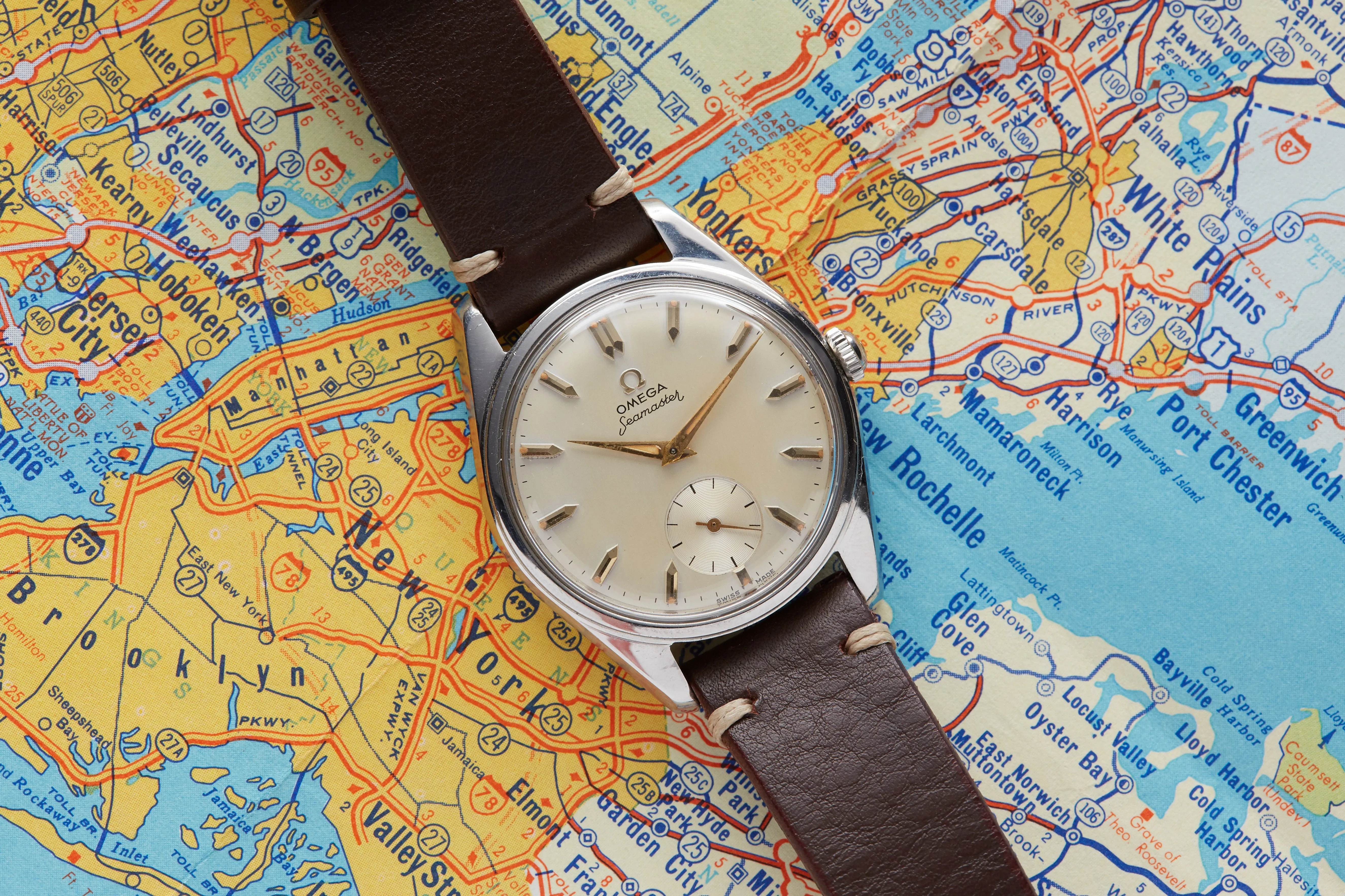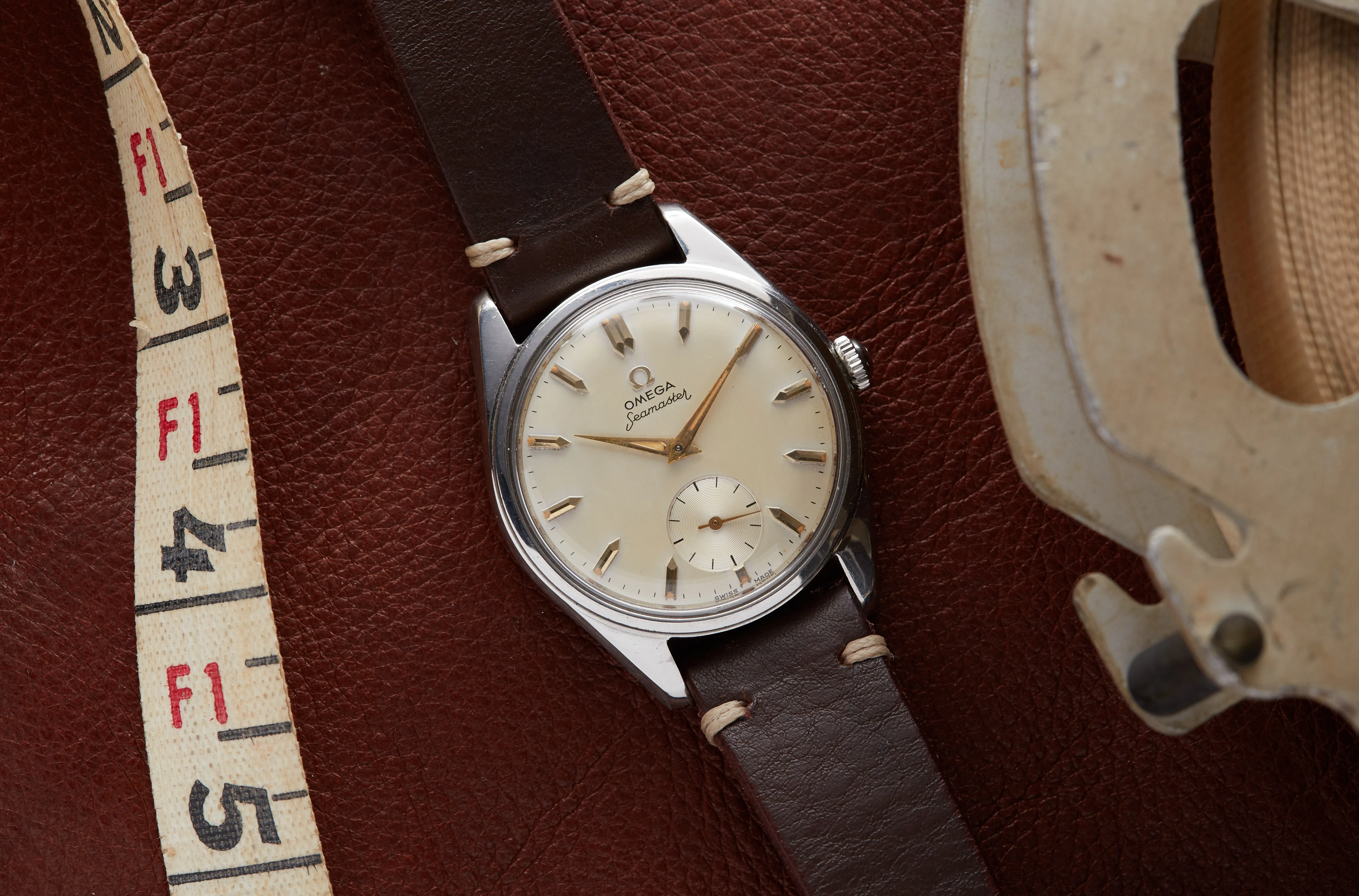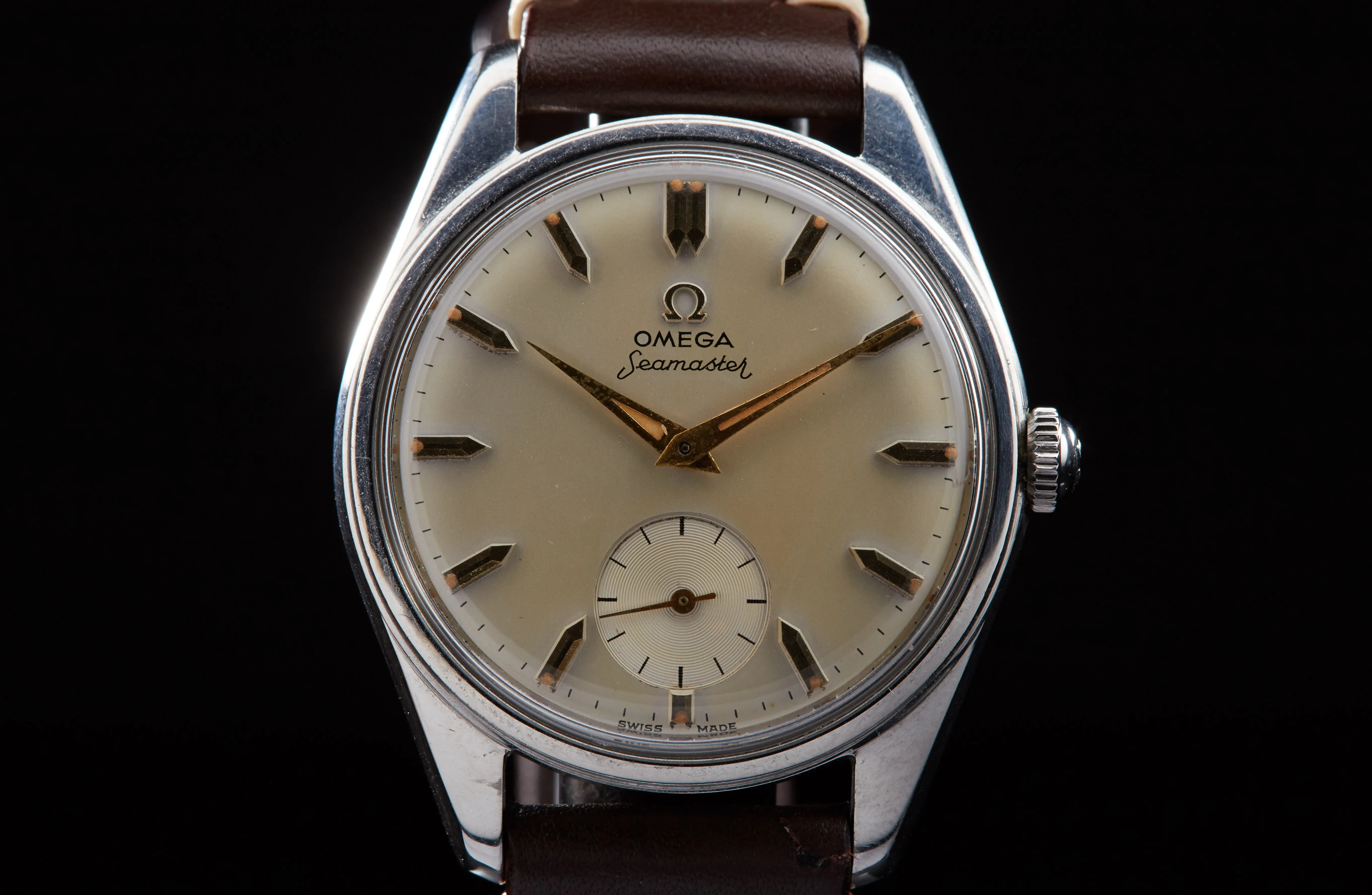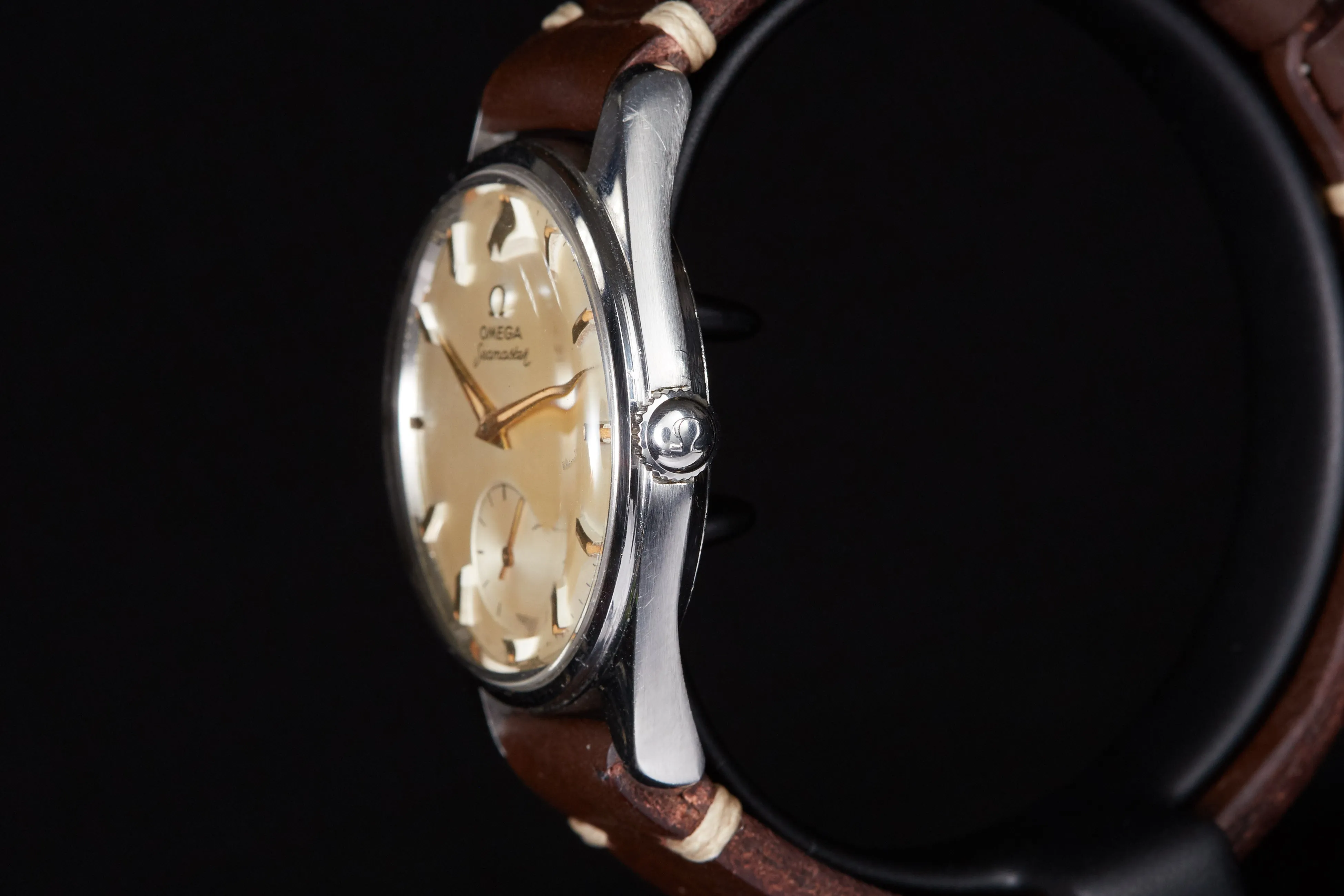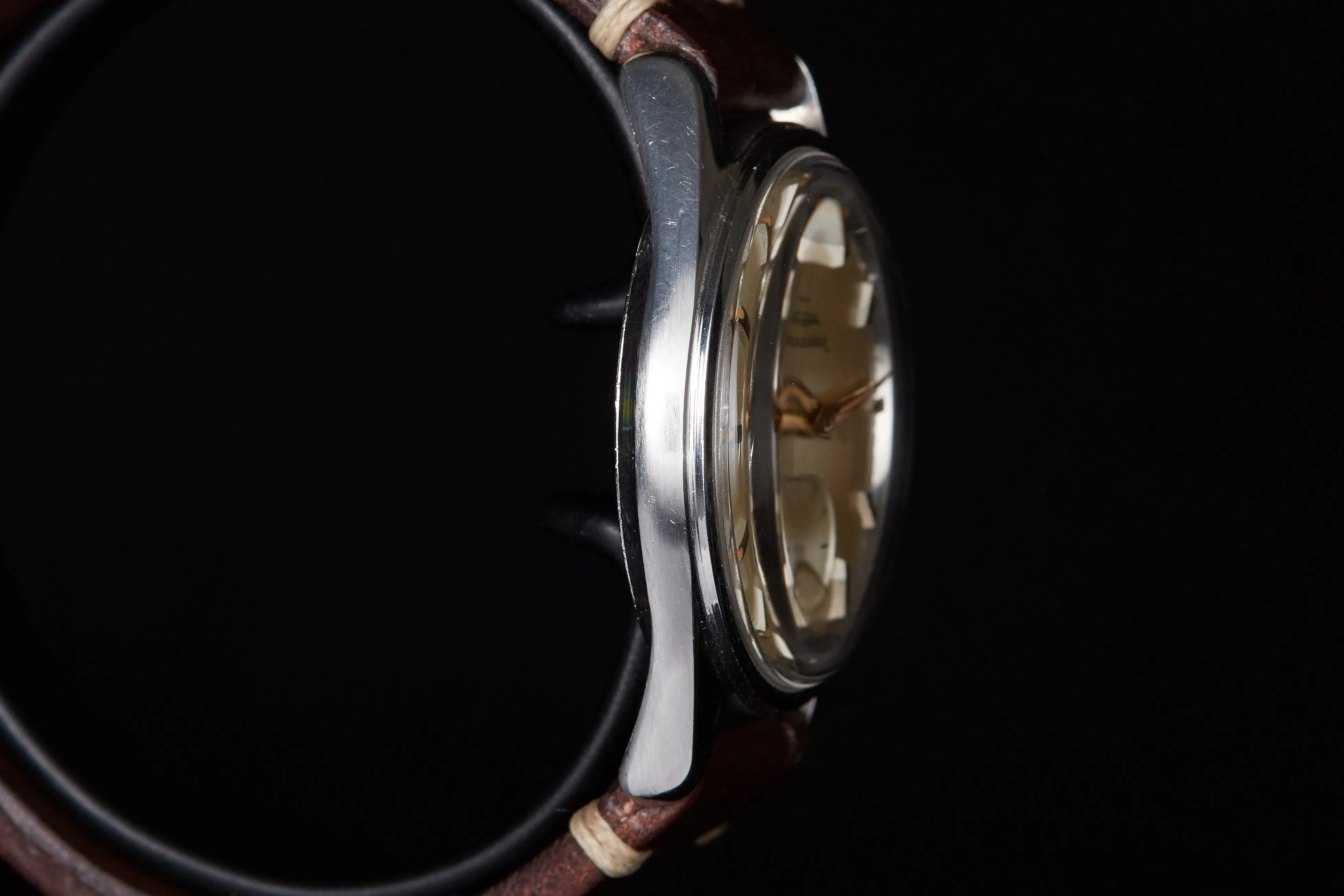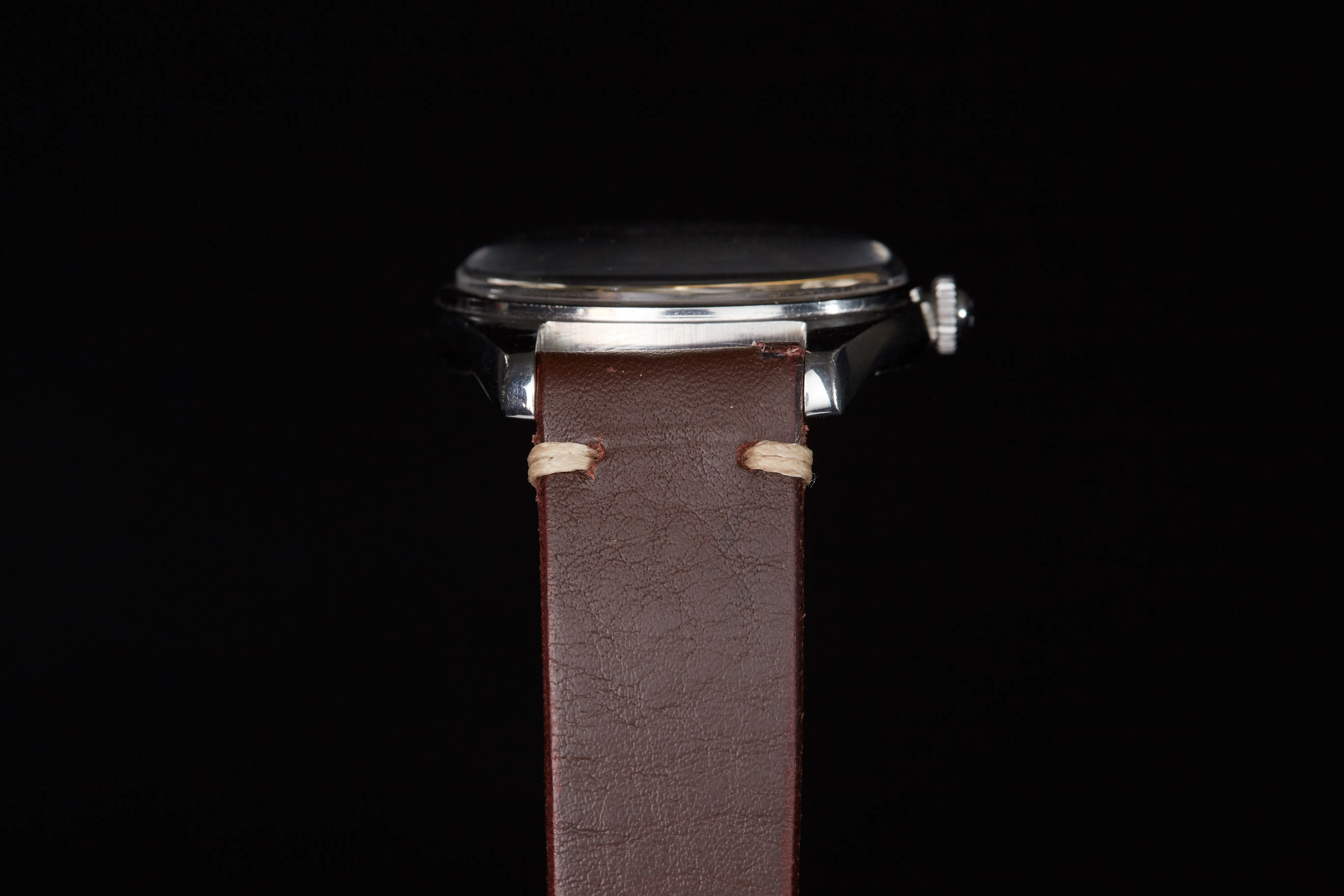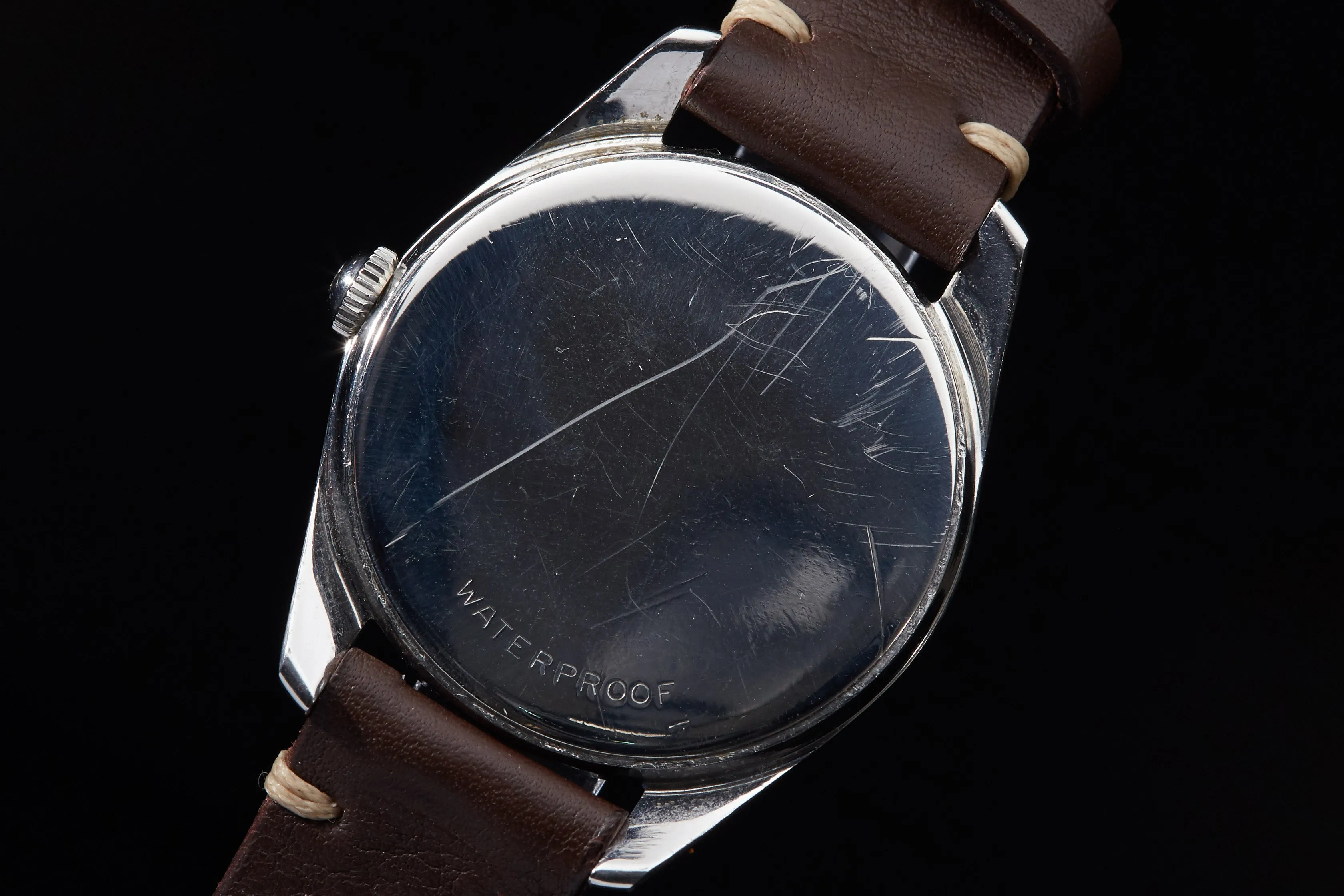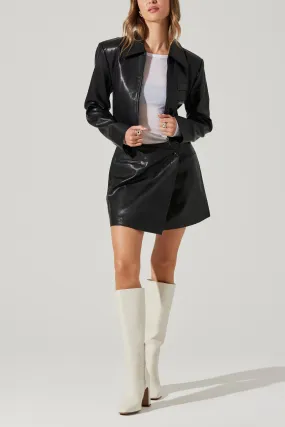Why We Love it
As trends in watch collecting move towards towards thinner profiles and precious metals, vintage dress watches continue to increase in desirability. With that said, it’s becoming seemingly more difficult to find information on the design and development of these dressier pieces, as compared to their sportier brethren. With so much attention spent on tool watches over the last few decades, much of the lineage of the humble dress watch has been ignored and forgotten, resulting in a knowledge gap when it comes to the more elegant timepieces.
Fortunately, this is not always the case!
This particular timepiece, an Omega Reference CK 2990-1 has quite an history behind it. Watches of this reference were originally born as Rancheros, and offered for sale in export markets such as the United States. However this example features a Seamaster dial, which were exclusively available in the Swedish market.
Maybe should we just call it a Seachero?
When offered to the Swedish market, it was determined that the name “Ranchero” wouldn’t go over well with Swedish buyers, so the dials were exchanged before sale with Seamaster versions and different handsets. The resulting timepiece is a classic and elegant dress watch that somehow reads sporty at times as well.
The beautifully aged cream white dial combined with the subsidiary seconds register at 6:00 and the yellow gold tone indexes and warm luminescent patination makes for an incredibly appealing look and a case profile that is the perfect size for everyday wear.
Vintage dress watches are on their way up in terms of collectability, but you can be sure that most of them won’t have as compelling a story as the CK 2990-1 “Swedish” Ranchero.
The Story
Introduced in 1958, the Ranchero was meant to be Omega’s successor to the Railmaster and Seamaster. Unlike those two watches—tough, purpose-driven, designed for specific professions or pastimes—the Ranchero was meant to do it all, really. Though they featured the same waterproof case design and robust hand-wound movement as its sportier brethren, the Ranchero’s slimmer profile meant that it could—like Ford’s Ranchero—do double duty for both work and play.
The thin profile of the crystal, coupled with the slim case, makes the dial really stand out, an effect that Omega used in many of its dress watches at the time. And the dial of the Ranchero owes much to the Railmaster, with its large luminescent hour markers and hands.
With all that the Ranchero had going for it, it should have been a success. By rights it should have sold as well as its automotive counterpart, which sold so well (over 508,000 units, in fact) that its success prompted Ford’s competitor, Chevrolet, to create a coupe utility of its own—the (in)famous El Camino! However, the Omega Ranchero did not prove to be the runaway hit that the Seamaster was, and Omega discontinued production by 1960.
Today, these limited production beauties are a rarity on the market, with clean examples rarely changing hands publicly. As the oddball in the lineup, they are finally getting the affection they deserve amongst vintage watch enthusiasts!

 Cart(
Cart(